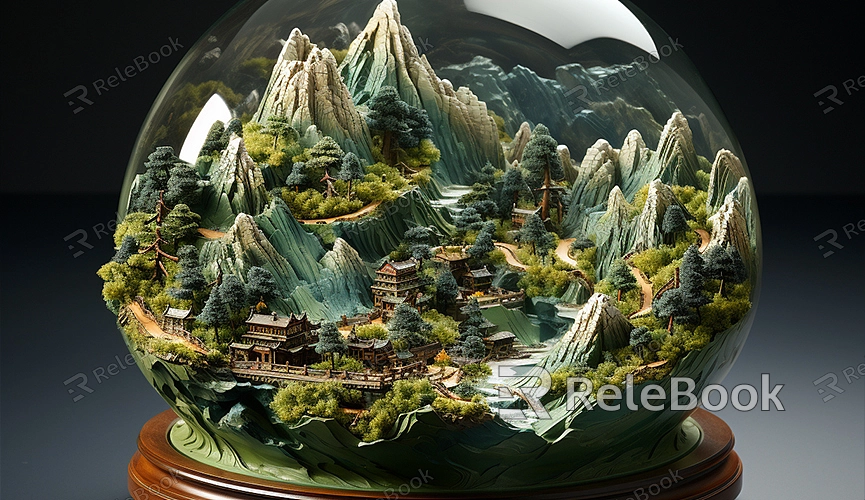Mountain Modeling Details in Cinema 4D
Modeling mountains in Cinema 4D requires consideration of the details and complexity of natural terrain. Additionally, the use of various 3D rock textures poses a challenge, and you can pre-download high-quality stone textures from Relebook. Here are some details to pay attention to when creating mountain models in C4D.

1. Terrain Introduction: Start modeling the mountain using Cinema 4D's terrain object or generated geometry. The terrain object allows you to generate natural terrain shapes using noise and parameters.
2. Elevation Adjustment: Adjust the elevation of the terrain to match the desired height of the mountain. Use editing tools such as elevation adjustment tools to manually or noise map-based height adjustments.
3. Noise and Details: Add noise and details to make the mountain look more natural. You can use C4D's noise effectors or texture maps to simulate the irregularities of the landscape.
4. Distinct Layers: Divide the mountain into different layers to simulate rock formations, vegetation, and other natural features. Each layer can use different textures and materials.
5. Detail Sculpting: Use sculpting tools like the Displacer Deformer to carve out details in the mountain. Adding details like rocks, rock layers, and cliffs enhances the realism of the mountain.
6. Water Flow Simulation: If the mountain includes rivers or lakes, use C4D's fluid simulation tools to simulate the flow of water. This adds more realism to the mountain.
7. Rendering Settings: After modeling is complete, adjust C4D's rendering settings to make the mountain look realistic during rendering. Utilize appropriate lighting, shadows, and materials.
8. Vegetation and Plants: Add vegetation such as grass, trees, and plants to the mountain. You can use C4D's instance object to quickly generate vegetation while maintaining performance.
9. Coloring and Texturing: Shade the mountain using suitable textures. Consider adding rock textures, grassy textures, and snow cover effects to simulate the mountain's appearance in different seasons and weather conditions.
10. Environment Setup: Configure C4D's environment and atmospheric effects to simulate the mountain under different times and weather conditions. Consider using fog effects and light scattering.
11. Animation and Camera: If you plan to create animations or flythrough scenes, consider using C4D's camera tools and adding appropriate camera animations.
12. Testing and Adjusting: Regularly conduct rendering tests to check the mountain's appearance at different angles and lighting conditions. Make adjustments and optimizations as needed.

